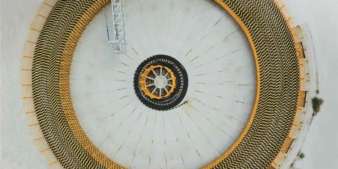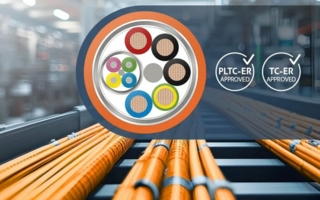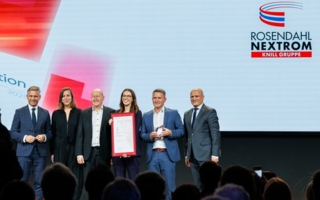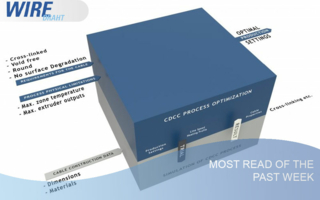17/07/2020 – HV and EHV cable production
Synchronized X-ray Centering on a CCV Line
To help Hellenic Cables start-up faster and generate much less scrap, Maillefer put in place the dual X-ray scanner solution.
The promise of quick start-ups for HV and EHV cable producers like Hellenic Cables is one that could translate to considerable savings. Imagine eliminating the tedious offline centering procedure by integrating it right into the extrusion line. The answer came with synchronous X-ray centering.
Long-time customer Hellenic Cables S.A. submarine cable plant at Corinthe, Greece, is member of the Cablel Hellenic Cables Group. They are known for supplying technologically advanced cables as well as for delivering complete turnkey projects, both in the energy and telecom sectors. Submarine cables and its installation are their specialty.
The typical centering procedure relies on operator abilities and on a single X-ray scanning device positioned after the crosshead. By judging the centricity difference with measurements taken inline at the hot end and those taken offline from fully cured cable, while also accounting for cable drooping, the operator can make needed adjustments.
Armenis Ioannis, Process Engineer at Hellenic submarine cable plant, confirms: “It is possible to make up to 525kV cables on our catenary line. But the centering procedure becomes more delicate when producing the higher voltage cables, even with the aid of Entry Heat Treatment and conductor rotation features. We take samples from long lengths at the drums, make measurements offline, return with centering adjustments, only to repeat the procedure again before reaching required cable quality.”
To help Hellenic Cables start-up faster and generate much less scrap, Maillefer put in place the dual X-ray scanner solution. With the first scanner positioned after the crosshead, a second one is placed at the cold end after the end seal. The system’s design and algorithms compensate for the effect of rotation and the distance between the two devices. Guided using machine vision, the second scanner automatically rotates to the correct position. Images are combined and overlapped into a comprehensive display for the operator.
Mr. Ioannis explains the result: “The synchronized X-ray units let us see the final concentricity of the insulation in real time and with the same orientation as concentricity seen at the hot end. By comparing overlapping images, our operators easily determine the insulation layer’s offset in order to compensate for drooping. Especially at the start ups, the time needed to center is notably faster. It is the way forward to enable cost savings with the added benefit that even inexperienced operators can improve the dimensional quality of the cable.”
Hellenic Cables’ CCV line has become easier to operate and makes reduced scrap due to an effortless centering procedure. In addition, the capability of the line improves by allowing more demanding cable constructions to be produced without requiring expensive low-sag materials. Such powerful tools make it possible to operate within tight tolerances, where nominal and minimal layer thicknesses are optimized. Synchronized X-ray centering becomes a sustainable and cost effective solution to make HV and EHV cables on a CCV line.
Maillefer Extrusion Oy
Tel.: +358 9 88665-600
www.maillefer.net




